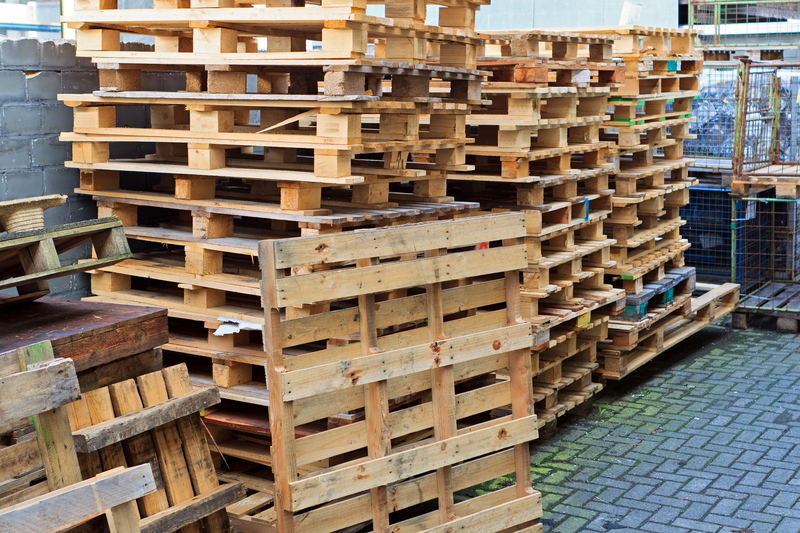What Categories Make Waste Hazardous?
Hazardous waste poses significant threats to human health, wildlife, and the environment. Understanding what categories make waste hazardous is vital for businesses, regulators, and all individuals seeking safer waste management practices. This article will break down the different categories that define hazardous waste, provide examples, and examine how hazardous waste is classified and regulated. Additionally, we will discuss why proper management of these waste types is critical.
Defining Hazardous Waste
Before identifying the categories that make waste hazardous, it's essential to understand the basic definition. The term "hazardous waste" refers to waste materials that are dangerous or potentially harmful to our health or the environment. These wastes can come in many forms: solids, liquids, gases, or sludges and are commonly produced by manufacturing processes, chemical production, battery manufacturers, automotive shops, and even households in the form of paints, cleaners, and pesticides.

Categories of Hazardous Waste: What Makes Waste Hazardous?
There are several ways to categorize what qualifies as hazardous waste. The main categories of hazardous waste are determined by their origin, composition, and the risks they pose:
- Listed wastes
- Characteristic wastes
- Universal wastes
- Mixed wastes
Each category is defined by specific criteria established under national and international regulations such as the United States Environmental Protection Agency (EPA) and the Basel Convention globally. Let's delve deeper into each of these hazardous waste categories to better understand what makes waste hazardous.
1. Listed Hazardous Waste
Listed hazardous wastes are those wastes specifically named and catalogued on regulatory lists due to their known harmful characteristics. According to the EPA, there are four primary lists of hazardous waste:
- F-list (Wastes from Non-specific Sources): These include common manufacturing or industrial process wastes, such as solvents used for cleaning or degreasing.
- K-list (Wastes from Specific Industries): Waste produced by specific industries, such as petroleum refining, pesticide manufacturing, or steel production.
- P-list and U-list (Discarded Commercial Chemical Products): Unused chemicals or products that have expired, such as certain pharmaceuticals or pesticides, that when discarded, become hazardous waste.
Listed wastes are hazardous by default. If a material appears on any of these lists, it's automatically considered hazardous, regardless of the concentration or the form it's in.
Examples include:
- Spent solvents like toluene or acetone (F-list)
- Wastewater from wood preservation (K-list)
- Unexpired, unused cyanide compounds (P-list)
- Discarded commercial-grade pesticides (U-list)
2. Characteristic Hazardous Waste
Not all hazardous wastes are listed. Some are considered hazardous due to their dangerous properties, known as "characteristics." There are four main hazardous waste characteristics:
- Ignitability: Waste that can easily catch fire. Examples: solvents, certain paints, gasoline.
- Corrosivity: Waste that can corrode metals or destroy living tissue on contact. Examples: strong acids and bases, battery acid.
- Reactivity: Waste that is unstable, can cause explosions, or release toxic gases when mixed with water or under other conditions. Examples: certain cyanides or sulfide-bearing wastes.
- Toxicity: Waste that is harmful or fatal if ingested or absorbed, or that leaches dangerous substances into the ground, such as heavy metals. Examples: waste containing mercury, lead, or arsenic.
Waste exhibiting any one of these hazardous characteristics is regulated as hazardous waste, exposing the extent of what categories make waste hazardous.
How Are Characteristic Wastes Identified?
Laboratory analysis, including EPA-approved test methods such as the Toxicity Characteristic Leaching Procedure (TCLP), is used to determine whether waste possesses these dangerous traits.
3. Universal Wastes
Universal waste refers to specific types of widely-produced hazardous waste that are subject to streamlined management regulations. This category is designed to encourage proper collection and recycling. Common examples include:
- Batteries (e.g., lithium, nickel-cadmium, lead-acid)
- Pesticides (certain recalled or residual types)
- Mercury-containing devices (thermometers, some light bulbs)
- Fluorescent lamps (contain mercury vapor)
Although universal waste is less strictly regulated than others, it still fits within the broader types of hazardous waste categories due to the potential harm it can cause if not handled correctly.
4. Mixed Waste
The mixed waste category refers to wastes that contain both hazardous waste and radioactive waste components. Such wastes pose dual risks and are strictly controlled by multiple regulatory agencies. Mixed waste is typically produced by nuclear power plants, hospitals, and research facilities using radioactive materials in conjunction with chemicals.
Additional Ways to Categorize Hazardous Waste
Beyond the primary categories explained above (listed, characteristic, universal, and mixed), there are other classifications that provide further insight into what makes waste hazardous:
- Acute vs. Chronic Hazardous Waste
- Solid vs. Liquid vs. Gaseous Hazardous Waste
- Household Hazardous Waste
Acute vs. Chronic Hazardous Waste
Acute hazardous waste can cause immediate harmful effects -- even in very small amounts -- such as poisoning, burning, or respiratory distress.
Chronic hazardous waste produces harmful effects over prolonged exposures, including cancer, developmental disorders, and environmental degradation.
Physical Forms of Hazardous Waste
- Solid hazardous waste - includes contaminated soils, filters, or absorbents.
- Liquid hazardous waste - includes spent solvents, acids, or industrial sludges.
- Gaseous hazardous waste - includes certain chemical vapors or industrial byproducts.
Household Hazardous Waste (HHW)
Even at home, certain wastes require special handling because they exhibit toxic, ignitable, corrosive, or reactive properties. Common household hazardous wastes include:
- Pesticides and herbicides
- Paints and paint thinners
- Automotive fluids
- Cleaning products containing ammonia or bleach
- Batteries and electronics
Improper management of HHW can lead to contamination of water, soil, and air, illustrating the importance of recognizing which waste is hazardous by category.
How Is Hazardous Waste Regulated?
National and international authorities have devised comprehensive regulations to control and remediate the damage caused by hazardous waste. In the United States, hazardous waste regulation is governed by the Resource Conservation and Recovery Act (RCRA). Other countries follow similar frameworks, often aligned with the Basel Convention to ensure global cooperation.
- Identification - Determining if a waste is hazardous by testing for listing and characteristics
- Manifesting - Documenting transportation from the generator to the disposal or recycling site
- Storage - Rules for safely storing hazardous waste on-site
- Treatment - Methods for neutralizing or stabilizing hazardous attributes
- Disposal - Guidelines for safe landfill disposal or incineration
Violations of hazardous waste regulations can result in severe penalties, environmental damage, and risks to public health.
Why It Is Critical to Recognize Hazardous Waste Categories
Proper identification and categorization of hazardous waste are vital for:
- Protecting human health from chemical burns, poisoning, and long-term diseases
- Preventing soil, water, and air pollution
- Minimizing risks to livestock and wildlife, safeguarding biodiversity
- Complying with environmental laws and avoiding legal penalties
- Promoting recycling and the safe reuse of materials
Failure to properly categorize and manage hazardous waste can lead to dire consequences, including contaminated drinking water sources, toxic exposure incidents, and hazardous air pollutants.
Best Practices for Identifying and Managing Hazardous Waste
To minimize risks, individuals and businesses should follow these best practices:
- Regularly review waste streams for potential hazardous properties or components.
- Label and segregate waste containers to prevent accidental mixing and chemical reactions.
- Train staff and family members in identifying hazardous waste and emergency response procedures.
- Work with certified hazardous waste disposal companies for safe handling and disposal.
- Stay updated on local regulations and hazardous waste lists as rules and definitions evolve.

Frequently Asked Questions About Hazardous Waste Categories
What are the primary types of hazardous waste?
The main types are listed, characteristic, universal, and mixed wastes, with each category defined by source, composition, or hazardous properties.
How do I know if my waste is hazardous?
Consult local and national hazardous waste lists and perform laboratory analysis for hazardous characteristics such as ignitability, corrosivity, reactivity, and toxicity.
Can household products be hazardous wastes?
Yes! Paints, cleaners, batteries, pesticides, and electronics are common household hazardous wastes and must be disposed of safely.
What happens if hazardous waste is not properly managed?
Improper management can result in soil and water contamination, dangerous chemical reactions, fires, explosions, toxic exposures, substantial fines, and long-term environmental damage.
Conclusion: The Importance of Understanding What Categories Make Waste Hazardous
Understanding what categories make waste hazardous is crucial for protecting our health and environment. From listed and characteristic wastes to universal and mixed wastes, each classification provides a framework for controlling dangerous substances and ensuring their safe management. By remaining informed and compliant with evolving regulations, individuals, businesses, and communities can play a vital role in creating a safer, more sustainable future.
Whether you're overseeing an industrial facility, maintaining a small business, or simply disposing of household products, knowing the categories that define hazardous waste can help prevent accidents and protect the planet.
For more guidance, consult your local environmental protection agency or certified hazardous waste professional.
- Stay informed.
- Stay safe.
- Manage hazardous waste responsibly.